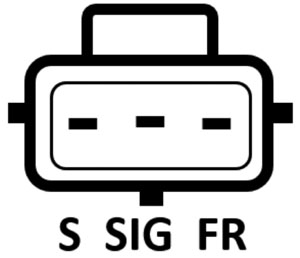
It has been reported many times that, even after replacing the faulty alternator with a new one on some Ford Smart Charge systems, the problem is still not resolved.
Analysis undertaken by Rolling Components has discovered that there are a number of reasons why this might occur:
Control lamp is lit
If the lamp is lit after fitting the new alternator and the engine is started, the plug or wires connecting the alternator may be faulty. Often one of the three wires is broken and has been is connected due to vibrations and engine movements.
Voltage is too high or unstable
In the event of excessive or unstable voltage, you should check the sensor connection. This is best done by following these steps:
1. Unplug the 3 pin plug from the alternator;
2. Locate the “S” terminal in the plug;
3. Connect a 10W test lamp between “S” and ground (the lamp should light up);
4. Measure the voltage on the “S” terminal while the lamp is connected – it must be exactly the same as the battery voltage. If the voltage is lower than the battery voltage then there is a voltage drop in the circuit. Very often the fuse which supplies “S” is corroded.
Check if the battery is a silver calcium type – has it been recently replaced? You should also inspect battery terminals and earth points for corrosion.

Danger looms
Additionally, check the continuity of the wiring loom from the alternator to the PCM. Due to the location of the alternator in relation to the PCM, the wiring can become chafed or the insulation melts from being too close to a heat source. This is a common reason for the battery light to illuminate and a new loom will be needed. Although it is listed for the Ford Connect, it can be modified for other models, such as the Focus and Mondeo.









